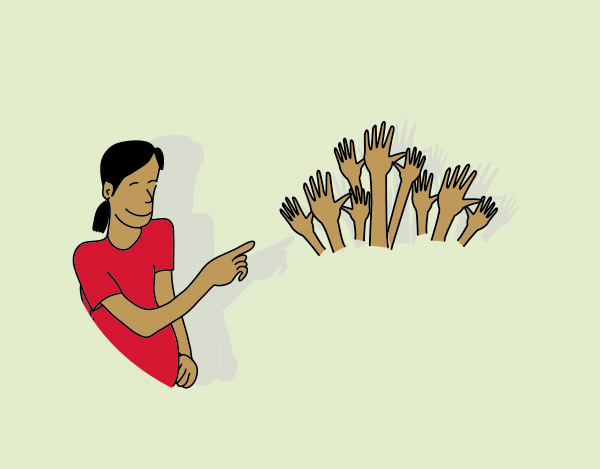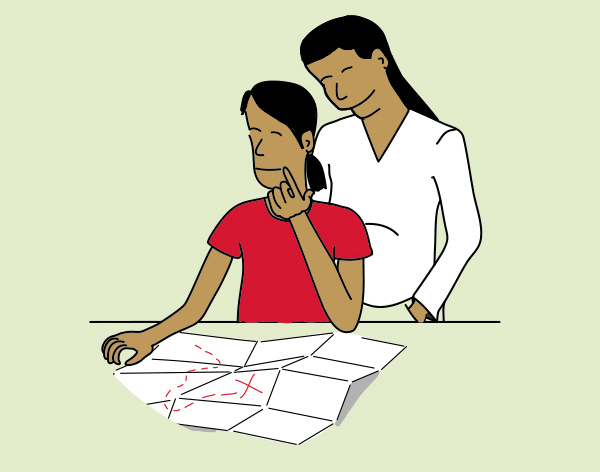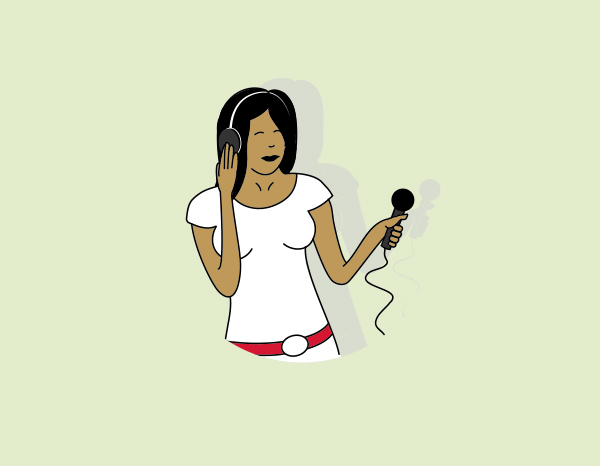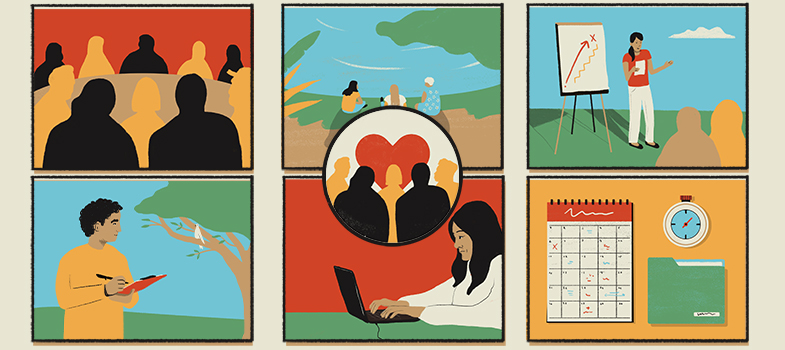Introduction to participatory techniques
7. Organise an interview
Step 1. Recruiting the people you want to interview
- The question you need to answer is "Who might have the information I'm looking for?”
- Another important aspect is that you need to make sure that you have targeted a diverse range of people who might have different opinions or perceptions based on their own experiences and context.

Step 2. When and where to interview
- Interviews should be carried out when people have time and are not pressed by other activities. The best time for the interview should be discussed and agreed with the person you interview. When choosing the location you want to make sure that it is somewhere the interviewee will feel comfortable, such as in their own home, or in the place they are describing to you. If you are asking information about farming practices, for example, it can be useful to be at the farm; the person you are interviewing can show you places, farming techniques, etc. and they can be inspired by being in the environment they are talking about.
- Sometimes it can be very useful, instead of interviewing a person in one place, to take a walk with the person while interviewing them. In this way the person can take you to see the places/activities they are describing. This can help us to better understand what the person is describing and can help the person to be more precise in the description.

Step 3. Recording, video recording or taking notes
- Taking notes during the interview requires great skill to be able to note down the appropriate material, while also paying attention to the interviewee and thinking about your next question. If you have the possibility of conducting the interview in pairs, one can ask the questions and the other one can take notes. Another option is recording.
- Recording allows you to concentrate on what the person is saying without having to write. Video recording also allows you to keep track of gestures and expressions. But people can be shy and not feel at ease being recorded. You always need to ask permission. In the event of taking a walk with the person, make sure you can record the information almost in real time by taking notes right after or even better during.

Tips for carrying out an interview:
- It is important to make sure, before starting to ask questions, that the interviewee knows what the discussion is about. Make sure people you interview know everything they will say will be kept confidential unless they allow you to use it and that they have given consent to be eventually recorded.
- You should also establish how long the interview will last with the interviewee and stick to that time.
- Remember that an interview is not an interrogation; you should try making the other person feel at ease and enjoy talking to you.
- Even if you have a pre-set list of questions, try not to fire them at the interviewee. Give them a chance to develop their ideas and also to ask for clarification if necessary.
- Even if you are nervous, make sure that you listen to the responses and interact with the other person.
- Do not ask complicated questions at the start of the interview. Instead, open the interview with some uncomplicated, simple questions (for example name, profession, number of years lived in the area, etc.).
- When framing your questions, try to make them as open-ended as possible. This prevents very short answers and gives the respondent the chance to develop their own ideas on the topic. Try not to give your personal opinion, as the interviewee might stick to it and be afraid (or too shy) to say something different.
- When dealing with aspects which may embarrass the other person, be prepared to move on to another issue if the interviewee is clearly very uncomfortable with the direction of the interview.
- At the end of the interview, you should provide the interviewee with an opportunity to ask you questions and explain again if necessary how you will use the recorded material.
